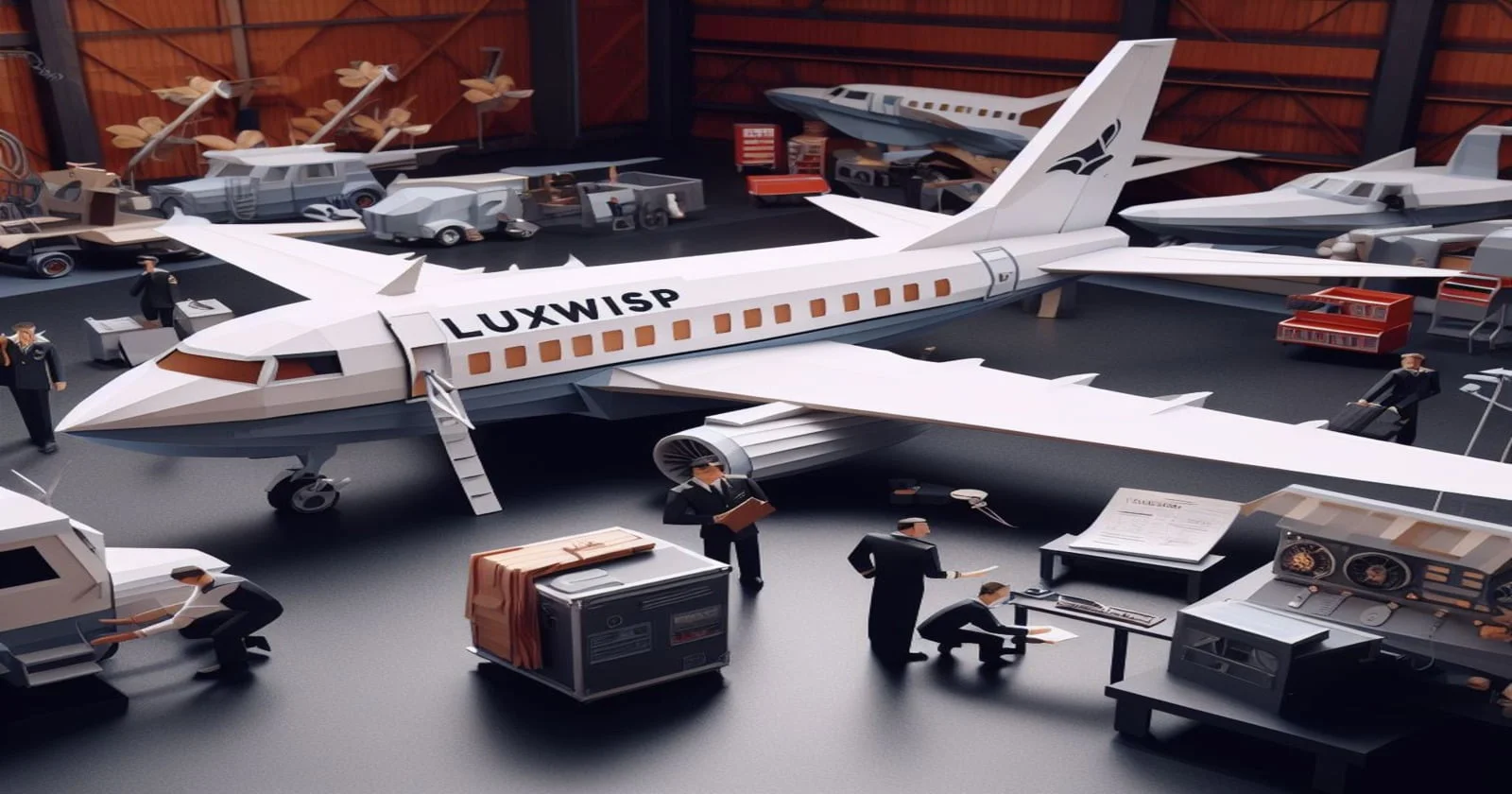Aerospace engineering is a field that stands at the forefront of technological innovation and exploration. It presents a complex landscape of advantages and challenges for those considering a career within its realms. The allure of contributing to the next generation of space exploration and aviation technology is tempered by the realities of rigorous academic requirements and a competitive job market.
As we explore the multifaceted nature of this discipline, one must weigh the high potential for career satisfaction and advancement against the demands and stressors inherent to the profession. This delicate balance prompts an intriguing question: what factors truly define the value and appeal of a career in aerospace engineering?
Key Takeaways
- Aerospace engineering offers diverse career opportunities in aviation, defense, and space exploration.
- The field requires continuous skill development to keep pace with technological advancements.
- High salaries reflect the demanding nature of the industry, including tight project deadlines and precision work.
- Potential relocation to aerospace hubs is necessary to access the best career opportunities.
Understanding Aerospace Engineering
Aerospace engineering is a dynamic field that encompasses the design, development, and testing of aircraft, spacecraft, and their related systems, requiring a blend of strong mathematical skills, proficiency in computer-aided design (CAD) software, and innovative problem-solving abilities. This discipline is at the forefront of technological advancements, engaging with complex projects such as drones, satellites, and the burgeoning sector of commercial space travel. Professionals in this arena are expected to have at least a bachelor's degree in aerospace engineering or a closely related field, setting a high educational standard for entry into the profession.
The aerospace industry presents a wide array of career opportunities across different sectors, including aviation, defense, and space exploration. This diversity allows engineers to specialize in areas that match their interests and skills, from designing next-generation fighter jets to developing sustainable propulsion systems for spacecraft. The essential skills for succeeding in this field extend beyond technical knowledge; they encompass a deep understanding of physics, an aptitude for three-dimensional conceptualization, and the capacity to solve complex problems through innovative engineering solutions. These competencies are critical in pushing the boundaries of what is technologically possible and in meeting the challenges of future aerospace projects.
Pros of Aerospace Engineering

Aerospace engineering stands as a beacon of innovation and technological advancement, offering professionals the chance to engage in the design of cutting-edge aerospace systems.
With the sector's competitive compensation, individuals can anticipate a financially rewarding career that also promises a significant global impact through contributions to aviation and space exploration.
This combination of innovative design opportunities, high salary potential, and the ability to affect change on a worldwide scale underscores the appealing aspects of a career in aerospace engineering.
Innovative Design Opportunities
Exploring innovative design opportunities, aerospace engineering stands at the forefront of developing cutting-edge spacecraft, aircraft, and aerospace technologies. This field not only allows engineers to work on projects that push the boundaries of what is technologically possible but also encourages creativity in tackling complex challenges in aviation and space exploration. The dynamic nature of aerospace engineering offers a unique blend of technical challenge and creative problem-solving.
Key benefits include:
- Opportunity to Work on Groundbreaking Projects: Engineers are at the helm of designing and developing new technologies that redefine aerospace capabilities.
- Creativity in Problem Solving: The field demands innovative solutions to intricate engineering problems, fostering a creative approach to design.
- Contribution to Industry Advancements: Aerospace engineers play a crucial role in achieving milestones in aviation and space exploration, contributing significantly to the industry's growth and evolution.
High Salary Potential
One of the most compelling advantages of a career in aerospace engineering is its high salary potential, offering individuals the opportunity to earn a significant income. With a median salary of $116,500 per year and top earners making over $160,000 annually, the financial rewards are substantial.
This field not only provides competitive compensation packages, but also opportunities for bonuses and benefits, further enhancing its attractiveness. The earning potential increases with experience and specialization, allowing aerospace engineers to aim for even higher wages. Salaries can vary based on expertise and the specific industry focus, but the consistent factor is the lucrative nature of these roles.
This high salary potential acts as a strong magnet, drawing individuals seeking rewarding career opportunities in aerospace engineering.
Global Impact Possibilities
Beyond the lucrative financial rewards, aerospace engineering holds the promise of making significant contributions to society through its global impact possibilities. This dynamic field stands at the forefront of developing technologies that shape our world in profound ways.
Here are three key areas where aerospace engineering makes its mark:
- Technological Advancements: It drives innovation on a global scale, leading to breakthroughs that transcend the aerospace industry and find applications in everyday life.
- Global Connectivity: Aerospace engineering is pivotal in enhancing global transportation systems, making it easier and faster to connect different parts of the world.
- Diverse Career Paths: Offering intellectually stimulating work, it attracts those eager to solve complex challenges, thereby fostering a culture of innovation and excellence in technology.
Cons of Aerospace Engineering

Turning our attention to the drawbacks of aerospace engineering, it's essential to recognize the sector's inherent challenges.
Job market volatility and high stress levels are notable concerns for professionals in this field. These factors can significantly impact career stability and personal well-being, necessitating a careful consideration for those aspiring to enter aerospace engineering.
Job Market Volatility
The job market for aerospace engineering is known for its volatility, significantly influenced by economic shifts and variations in government spending. This instability can create uncertainties regarding job stability and long-term career opportunities for aerospace engineers.
Several factors contribute to this volatility:
- Economic Fluctuations: Changes in the economy can directly impact defense spending, commercial aviation trends, and space exploration initiatives, affecting demand for aerospace engineers.
- Geopolitical Factors and Industry Competition: Shifts in global politics and competition within the industry can further influence job availability and growth prospects.
- Technological Advances: Rapid changes in technology necessitate continuous learning and adaptation, underscoring the importance of staying current on industry developments to remain competitive in a fluctuating job market.
High Stress Levels
Aerospace engineering demands high precision and accuracy in its operations, inherently leading to elevated stress levels among professionals in the field. The industry is bound by strict safety regulations that put immense pressure on engineers to ensure the reliability and safety of aerospace products. Any mistakes can lead to catastrophic consequences, further intensifying the stress surrounding aerospace engineering tasks.
Engineers are constantly under the microscope for quality control, safety, and reliability, amplifying the stress they experience daily. Additionally, the nature of aerospace projects—which often involve tight deadlines and complex problem-solving—contributes significantly to the pressures faced. The potential for severe repercussions in the event of failure heightens the stress and pressure, making it a challenging environment to navigate.
Educational Pathways

Embarking on a career in aerospace engineering demands a solid educational foundation, typically initiated with a bachelor's degree in the field or a closely related discipline. This rigorous academic journey is designed to arm aspiring engineers with the core principles of aerospace dynamics, materials science, and propulsion systems. Given the complexity and precision required in this field, the educational pathway is both challenging and enriching.
To navigate the academic requirements and prepare for a successful career in aerospace engineering, students should consider the following steps:
- Pursue a Bachelor's Degree: A bachelor's degree in aerospace engineering or a related field such as mechanical engineering provides the essential knowledge and skills. This program typically covers mathematics, physics, and computer-aided design (CAD) software, laying a strong foundation for aspiring aerospace engineers.
- Consider a Master's Degree: For those aiming at advanced roles within the aerospace industry, a master's degree can be advantageous. Some employers prefer candidates with a graduate degree for specialized positions, emphasizing the importance of continued education.
- Gain Practical Experience: Internships offer invaluable hands-on experience and networking opportunities. They allow students to apply theoretical knowledge in real-world scenarios, fostering a deeper understanding of aerospace engineering practices.
Continuous skill development and education are essential for staying competitive in the aerospace engineering field, ensuring professionals can adapt to technological advancements and industry demands.
Career Opportunities

Diverse career opportunities abound in aerospace engineering, spanning aircraft design, space exploration, and defense systems. This dynamic field attracts individuals with a passion for innovation and a desire to contribute to cutting-edge advancements. The versatility of aerospace engineering is reflected in the wide range of roles it offers, from designing next-generation aircraft to developing technologies that push the boundaries of space exploration.
The global demand for aerospace engineers is on the rise, driven by increasing investments in both the public and private sectors. This growing demand ensures a variety of job opportunities, making aerospace engineering an attractive career path. Research positions, available in both academic and industry settings, allow engineers to work on pioneering projects and contribute to the advancement of aerospace technology.
Government agencies, alongside private aerospace companies, are key employers in this sector, offering roles in research, development, and manufacturing of aircraft and spacecraft. Furthermore, the aerospace field is marked by international collaborations, offering engineers unique opportunities for career growth and advancement. Through these collaborative projects, aerospace engineers can gain invaluable experience and exposure to diverse cultural and technical perspectives, enhancing their professional development.
Technological Advancements

Building on the foundation of extensive career opportunities, the realm of aerospace engineering continues to push the boundaries of innovation through significant technological advancements. This dynamic field is characterized by its relentless pursuit of discovery and improvement, impacting various sectors beyond its immediate scope.
The evolution of aerospace engineering is marked by several key developments:
- Development of New Technologies: Aerospace engineers are at the forefront of creating lightweight materials and advanced propulsion systems. These innovations are pivotal in constructing more efficient and durable aircraft and spacecraft, significantly enhancing performance and sustainability.
- Contribution to Medical Science: The crossover of aerospace technology into medical science is a testament to its versatility. By adapting technologies initially designed for space exploration, aerospace engineering has facilitated the development of sophisticated medical instruments and diagnostic tools, thereby improving patient care and treatment outcomes.
- Enhancement of Everyday Technology: The exploration of outer space through spacecraft technologies has a profound impact on everyday technology. By pushing the limits of what is technologically feasible, aerospace engineering has paved the way for advancements in communication, navigation, and environmental monitoring, enriching the quality of daily life.
Moreover, aerospace engineering's quest to explore uncharted territories beyond Earth's orbit not only fuels scientific curiosity but also holds the promise of discovering new worlds, potentially habitable for future human settlement. This endeavor underscores the discipline's pivotal role in shaping the future, offering boundless opportunities for innovation and discovery.
Making the Decision

Deciding to pursue a career in aerospace engineering involves weighing both its promising opportunities and inherent challenges. With an expected job growth rate of 3% and an average salary of $116,500 per year, the field offers significant financial incentives and evidence of steady demand. However, potential stressors such as tight project deadlines and the necessity to relocate to specific areas where the aerospace industry thrives cannot be overlooked. The limited job opportunities in certain locations further complicate the decision, alongside the demanding coursework featuring advanced mathematics that is required to succeed in this field.
Additionally, the aerospace engineering sector is marked by its competitive nature, driving the continuous need for innovation and skill enhancement. Despite these challenges, the industry presents diverse and rewarding career paths that cater to a variety of interests and skill sets within the realm of aerospace. Making the decision to enter this field requires a careful consideration of these factors, balancing the lure of high salaries and the excitement of contributing to cutting-edge technological advancements against the pressures and demands intrinsic to aerospace engineering.
Conclusion
In conclusion, aerospace engineering presents a compelling career choice characterized by its high demand, competitive salaries, and involvement in pioneering space exploration and cutting-edge technologies.
Despite the challenges of geographic job limitations, rigorous academic requirements, and workplace stress, the field offers significant opportunities for specialization, practical engineering experience, and career advancement.
Prospective engineers must weigh these factors carefully, considering both the rewards and demands of the profession. Ultimately, aerospace engineering stands as a testament to human innovation and the relentless pursuit of technological advancement.










